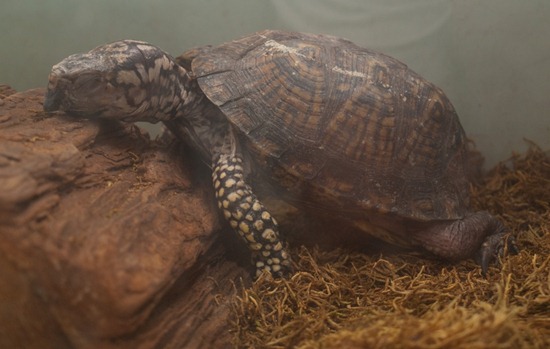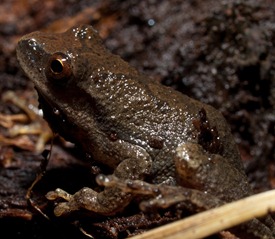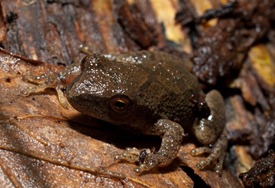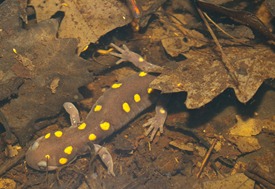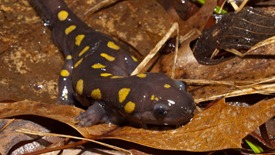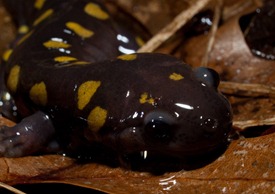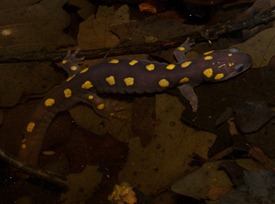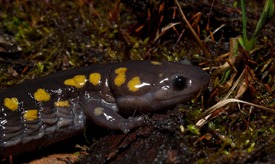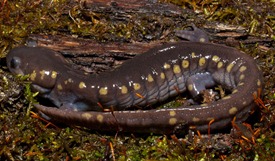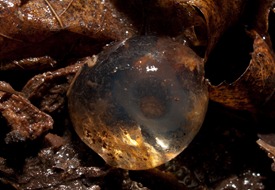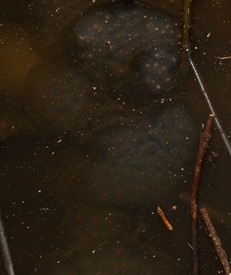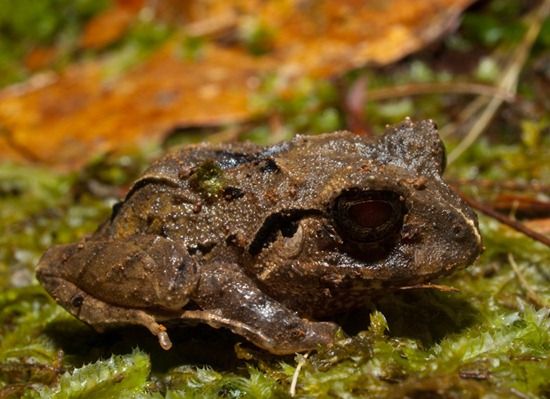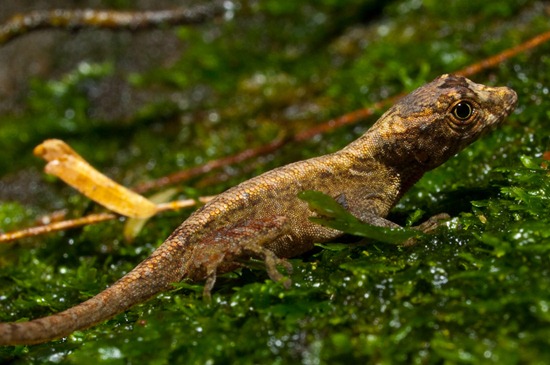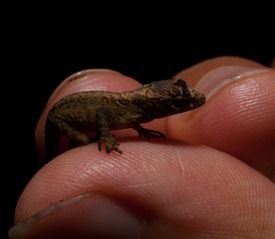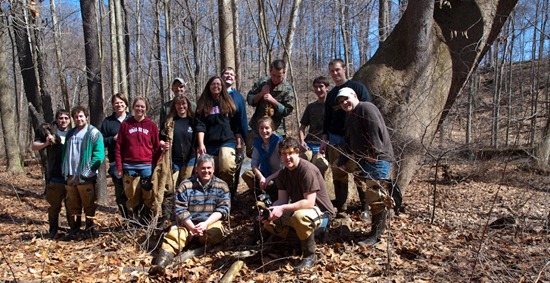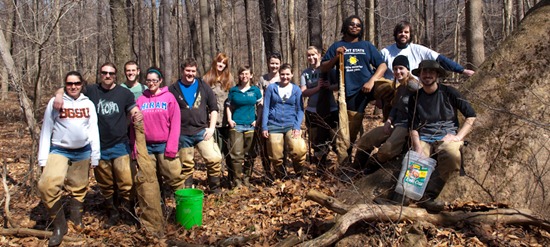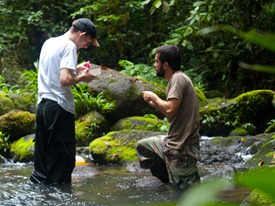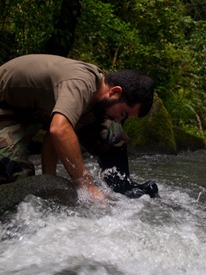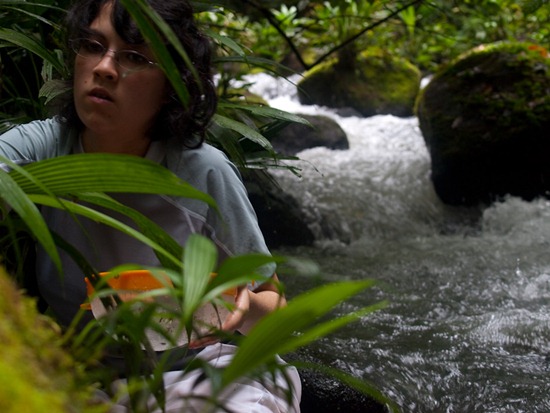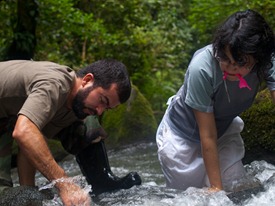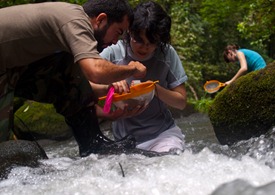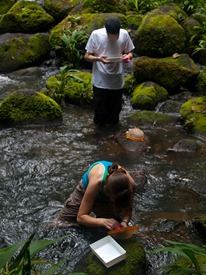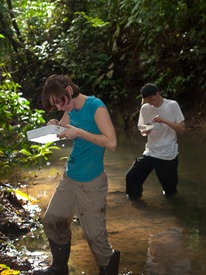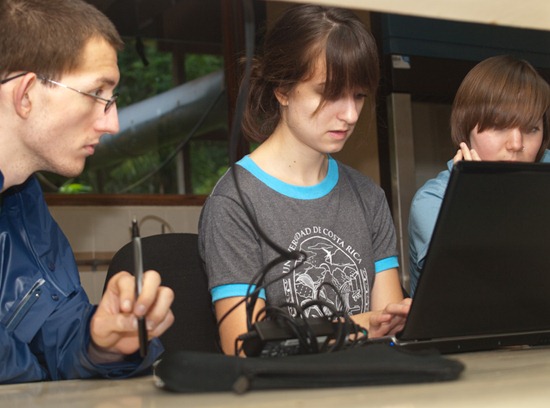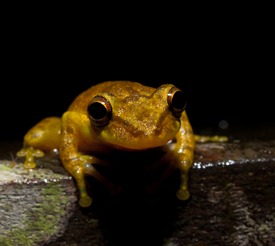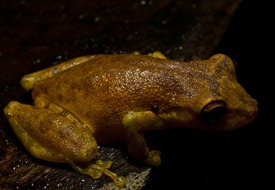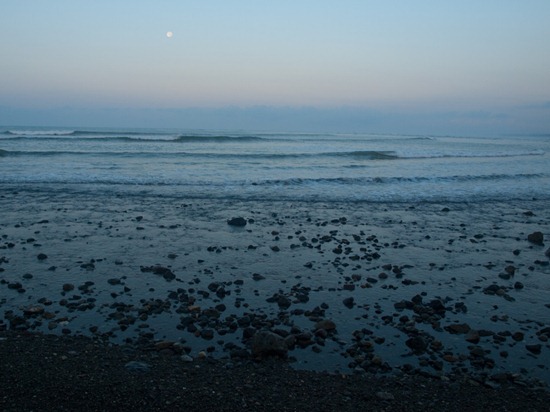Rocky, my pet Eastern Box Turtle, tends to sleep in peculiar positions. I’m rarely able to get my camera before he notices, wakes up and shifts positions, but I managed to snap this photograph of him using his bark home as a pillow before he awoke.
Monthly Archives: March 2010
Spring Peeper
Although there were a few instances when wood frog calls were heard, the only species of anuran we caught or saw at this week’s trip to Cuyahoga Valley National Park was Psuedacris crucifer. Unfortunately, the frogs did not seem to be as active or abundant this year as in the past, when we would regularly see peepers calling, wood frogs mating (even with green frogs), and hear little else than a deafening buzz of frog calls.
Spotted Salamander Hunt
Last Tuesday, several students, Doug, Nate, Dan, Allison and myself (totaling 15!) went to a secret vernal pool in Cuyahoga Valley National Park (well, maybe it’s not very secret) to observe spotted salamanders. We encountered plenty of spotted salamanders, a red-spotted newt, and spring peepers. It was an exciting night, and there were several enthusiastic photographers present (I think four people had dSLRs) so I hope to see some photographs other than my own.
Below are some spotted salamander pictures, posed and unposed.
We also found some eggs in and around the woodland wetland. There seemed to be two types: one type found under logs with more or less a single eggs surrounded by gelatin, and a second type in the water with many eggs encased in a single, gelatinous, cresent-shaped mass. Although I’m certain that the later are spotted salamander eggs, I’m unsure about the former, but I would still argue that they are Ambystoma given their size.
Craugastor megacephalus
A common litter-dwelling frog, Craugastor megacephalus has recently been moved to a new family, Craugastoridae (formerly Leptodactylidae). It’s cranial ridges and warty-appearing skin are generally thought of as toad characteristics, but this rain frog lacks large, poison-secreting, parotiod glands behind the eyes.
This individual was caught along side the Norops humilis in La Selva.
Juvenile Norops
Vertebrate Zoology 2010
La Selva Group
Hyla phlybodes
In early January, the Canta Rana wetland in La Selva was alive with a tiny, yellow hylid. Since I didn’t take proper pictures for identification, my best guess is Hyla phlybodes; it’s supposedly common both in the region and the reserve itself, and can be frequently heard calling around that time of year.
The other magnificent frog at the wetland you’ve already seen.
Aquatic Lepidoptera
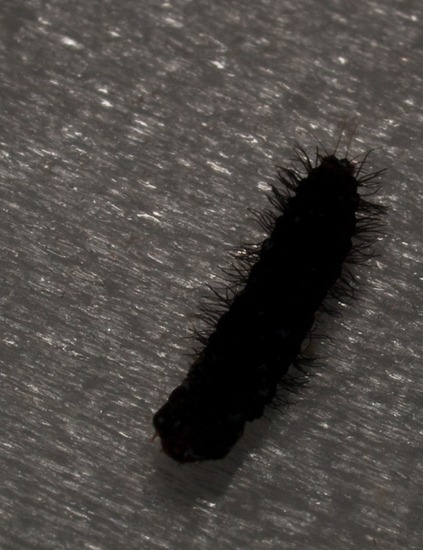 The group Bernald and I led in La Selva collected aquatic insects from several stream sites that varied in total discharge and water velocity (essentially a riffle-pool macroinvertebrate community study). One of the coolest finds was this aquatic Lepidopteran larva in the genus Petrophila (Pyralidae), particularly since I had never seen any aquatic insect larva in this insect Order. Interestingly, many aquatic lepidopteran larva are shredders/herbivores of Typha.
The group Bernald and I led in La Selva collected aquatic insects from several stream sites that varied in total discharge and water velocity (essentially a riffle-pool macroinvertebrate community study). One of the coolest finds was this aquatic Lepidopteran larva in the genus Petrophila (Pyralidae), particularly since I had never seen any aquatic insect larva in this insect Order. Interestingly, many aquatic lepidopteran larva are shredders/herbivores of Typha.

